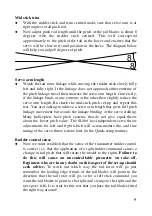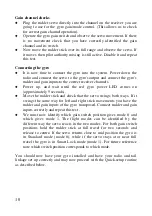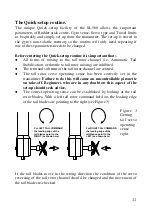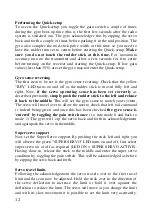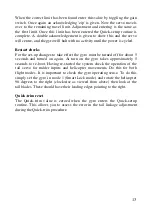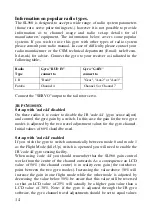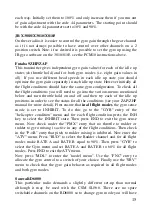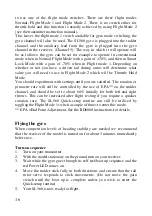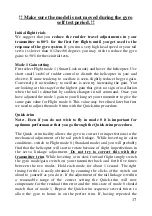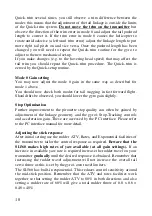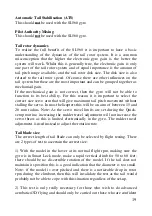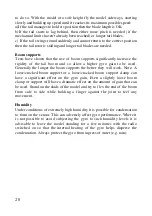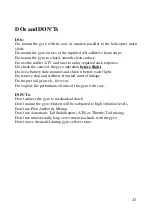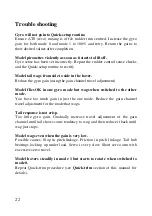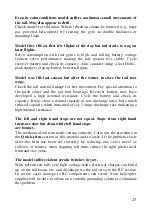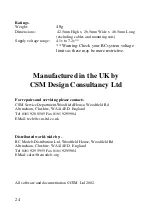
23
Even in calm conditions model suffers continuous small movements of
the tail. May also appear to drift.
Check model for vibration. Where vibration cannot be reduced (e.g. large
gas powered helicopters) try resiting the gyro on double thickness of
mounting foam.
Model flies OK on first few flights of the day but tail starts to wag on
later flights.
Servo consumption with fast gyros is high, and falling battery voltage
reduces servo performance making the tail system less stable. Cycle
receiver battery and check its capacity. Also consider using a fast Delta -
peak charger to top up battery between flights.
Model was OK last season but after the winter in store the tail now
wags.
Check the tail control linkage for free movement. Pay special attention to
the pitch slider and the tail hub bearings. Receiver battery may have
developed a high internal resistance. Cycle the battery and check its
capacity. It may show a normal capacity at low discharge rates, but a much
reduced capacity when measured at say 3 amps discharge rate indicating a
high internal resistance.
The left and right hand stops are not equal. Stops from right hand
turns are slow but clean while left hand stops
are bouncy.
The mechanical tail trim needs setting correctly. Carry out the procedure in
the
Quick-trim
section of this manual and re-asses. If the problem exists
after the trim has been set correctly try reducing one servo travel as
follows:- if bouncy when stopping left turns reduce the right pitch travel
limit and vice versa.
The model suffers violent erratic twitches in yaw.
With belt-driven tails very high voltage static electrical charges can build
up on the tail boom, etc. and discharge via the tail servo to the RC system.
In severe cases damage to RC components can result. Your helicopter
supplier will be able to advise on a suitable grounding scheme to eliminate
this problem.

